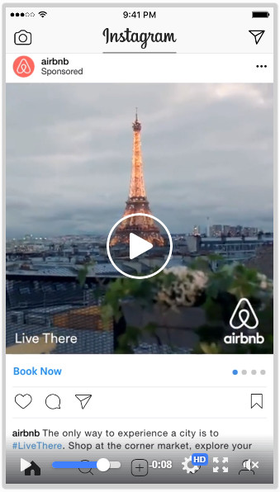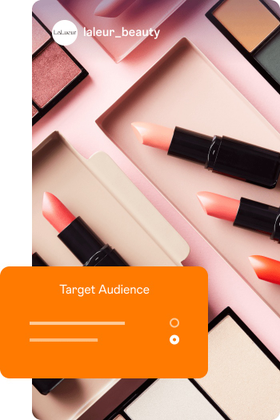Social Media Ads Cost Breakdown: Facebook, Instagram, TikTok, Pinterest and More
Get a full comparison of how much it costs to advertise on popular social media platforms including Facebook, Instagram, TikTok, Pinterest, and more.
Read More
The widely-known social media network, Instagram, began implementing its advertising program in 2015, four years after Facebook acquired the platform. Through sponsored posts and articles, the program is a robust tool for businesses to use when attempting to reach their target audiences. Instagram’s advertising program targets users based on their location, interests, habits and various other characteristics. As brands strive to make an impact on Instagram, let’s discuss the importance of Instagram’s advertising program.
Instagram’s advertising offers a variety of ad formats, such as photo ads, video ads, carousel ads, and story ads. Advertisers can also incorporate a CTA button within the ads, prompting viewers to “Learn More,” “Shop Now,” or “Sign Up.” The ads offer in-depth statistics to help advertisers monitor effectiveness and performance, and make data-driven decisions.
With so many Instagram advertising options available at our fingertips, it can be challenging to know where to begin. Let’s explore the advantages of using Instagram ads for businesses and how advertisers may leverage the social platform to spread brand recognition, boost website traffic, produce leads, and increase sales. We will cover how to create efficient and effective advertisements, such as picking the best ad type, focusing on the proper market, and developing exciting content. We will explore the ins and outs of each Instagram ad type and how to use them to maximize your business’ campaigns.
When companies advertise their products/services on Instagram, they have a variety of goals they want to achieve. These goals are known as objectives. For example, some people may want to increase the number of product sales. The term “ad format” refers to how advertisements appear and how viewers may engage with them. Therefore, someone may choose to use a carousel ad if they want to display images of their goods being used in different scenarios, while they may opt for a single photo ad if they only want to show one favorable image with a button to click to buy it.
Choosing the appropriate objective and ad format is crucial to ensure that the advertisement is successful and contributes to the overarching goal.
Choosing the right ad format will help you communicate your brand’s message in the most effective way possible. It’s like deciding the best way to explain to your family why you should all go to a particular destination for vacation by showing images or videos of the location. Choosing the right ad format will let your audience know that you're not just another mundane advertiser, but rather a creative and innovative brand that knows how to catch their attention and make them interested in your content, which causes them to take action.
Now that you have the basics down, here’s an overview of Instagram’s main ad formats and when to use them.
The most basic of all Instagram ad formats, image ads contain a single image, a footer and optional copy. Image ads are an excellent choice when aiming to emphasize a single piece of strong visual content. They’re helpful at any stage of the sales funnel and are very quick to create. It is important to note that image ads do have limitations. A different ad format will likely be more appropriate if you want to promote a group of products or services.

Use image ads to:
Boost brand awareness
Promote a single product or service
Convey a clear and concise message
These ads are like short movies that play on a viewer’s screen — they can be up to a minute long and have sound and music. Video ads are similar to TV commercials, except they’re shorter and made specifically for the platform. Video ads should be used to display a product or service that a company offers or wants to sell. The main goal of a video ad is to grab the viewer's attention, which hopefully results in the completion of a desired action.

Use video ads to:
Boost brand awareness
Capture the viewer’s attention
Deliver a message
Result in a desired action
Want to know why it’s important for your brand to know how to create Instagram carousel ads? Keep reading! Instagram carousel ads can be a promotional tool to help businesses display various images or videos in a single post. These ads are more interactive than a typical image or video ad; viewers can swipe left or right to view each piece of content.
Carousel ads are a popular option for e-commerce companies, since they provide more flexibility and creative options than single image or video. However, if you want to focus on videos, Instagram allows you to create video carousel ads! Video carousel ads give brands a dynamic way to engage with their audience.
Instagram carousel ads examples could be a swimwear store showcasing a new collection with images of different bikinis in one post or a hotel promoting their new dining hall with images of the tables, food, and cooks all within a singular post.

Use carousel ads to:
Promote multiple products, each linking to a relevant landing page
Highlight multiple features of benefits of the same product
Explain a step-by-step process
Instagram story ads appear in between the stories of the accounts you follow. They last around 15 seconds and can include images or videos, and interactive elements like polls or swipe-up links. These ads blend naturally into the viewer’s experience and can be targeted based on factors such as demographics, interests and behavior. Story ads have become an increasingly popular way for brands to reach their target audience. The social media platform also offers story carousel ads! Instagram story carousel ads provide the ability to have a unique caption and link for each piece of content, making it possible to showcase many items or various features of a single product.
To get the most out of your story ads, you must acknowledge the Instagram story ads specs, such as the optimal dimensions and placement. When creating an Instagram story ad template, it’s necessary to pay attention to the recommended size and create an engaging design to ensure your ad delivers. Use the examples below to help guide you through Instagram story ads.
Here is an example from a cosmetic brand that used a story ad to showcase its new collection of lipsticks with a 15-second video of models wearing the different lipstick shades. Another example might be a jewelry brand using a story ad to promote a limited-time discount code with an intriguing, eye-catching font and a swipe-up link to their website.

Use stories ads to:
Inspire action
Deliver dynamic content without heavy production costs
Engage younger audiences with a full-screen experience
If you’d like to make the most out of Instagram ads, there are a few things to remember.
Make sure you’re targeting the right audience. You need to think about who your ideal customer is and what they like, then you can implement Instagram’s targeting options to reach that audience.
Ensure that your ad is aesthetically pleasing. Use high-quality images and videos and curate attention-grabbing captions!
Consider using Instagram’s ad formats to effectively showcase your brand in various ways.
Finally, keep track of your ad’s performance and adjust your marketing strategy as necessary to ensure you will receive better results. With the right ad format, Instagram can be a powerful marketing tool helping your brand drive engagement and conversions.
You can launch, manage, and report on your social ads (including Instagram!), display ads, and email in one streamlined platform. Save time and money with AdRoll. Learn more about our automation builder.
Not sure how to launch Instagram ads? Start with our guide.
Last updated on May 10th, 2023.